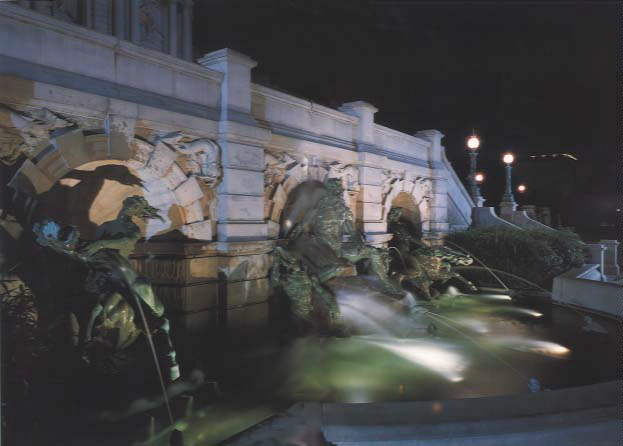
Do you sing in the shower? Studies indicate 80% of us do. That quirk of human hum might help to save Cape Town, and maybe other places, too. South Africa’s famous city is suffering from three years of scant rainfall, coupled with rapid urban expansion. While solutions to the water crisis such as desalination of sea water, improved ground water collection, and other water engineering innovations are in development, residents have been asked to limit water use to 50 liters (13 gallons) per day. Cyrene, ancient Greek city-state, was founded in response to persistent drought on Thera (Santorini). Climate migrants fled the parched land to build a new city abundant of water and replete with potent silphium, a magic plant that appeared to foster science, arts, and even amatory expressions. Rome, when suffering a water crisis, built aqueducts to bring water to the city, enough for drinking, bathing, and water sculptures, honored by composer Resphigi in The Fountains of Rome. Music now inspires South Africa’s vision for honoring and saving water. “People like to sing in the shower,” observed Mariska Oosthuizen, head of brand at Sanlam, South African investment firm, that invited musical artists to create two-minute songs, free for download:
- Kwesta, “Boom Shaka Laka“
- Mi Casa, “Nana“
- GoodLuck, “Taking It Easy“
- Fifi Cooper, “Power of Gold“
- Francois Van Coke, “Dit raak Beter“
- Jimmy Nevis, “Day Dream“
- Rouge, “Deja Vu“
- Desmond & the Tutus, “Teenagers“
- Youngster, “Wes Kaap“
- Springbok Nude Girls, “Bubblegum On My Boots“
80% of residential water use happens in the bathroom. Showers use 10 liters (2.6 gallons) per minute. Do you sing in the shower? Take the 2 Minute Shower Challenge and join the chorus in praise of water.
Kammies, Kieno “MiCasa releases 2 minute shower song to save water.” 17 November 2017. KFM. www.kfm.co.za/articles/2017/11/17/musicians-step-in-to-entice-capetonians-into-saving-water.
Sanlam.”SA’s biggest artists are singing to save water. Are you?” https://2minuteshowersongs.com.
Building the World Blog by Kathleen Lusk Brooke and Zoe G Quinn is licensed under a Creative Commons Attribution-NonCommercial-NoDerivs 3.0 Unported License


